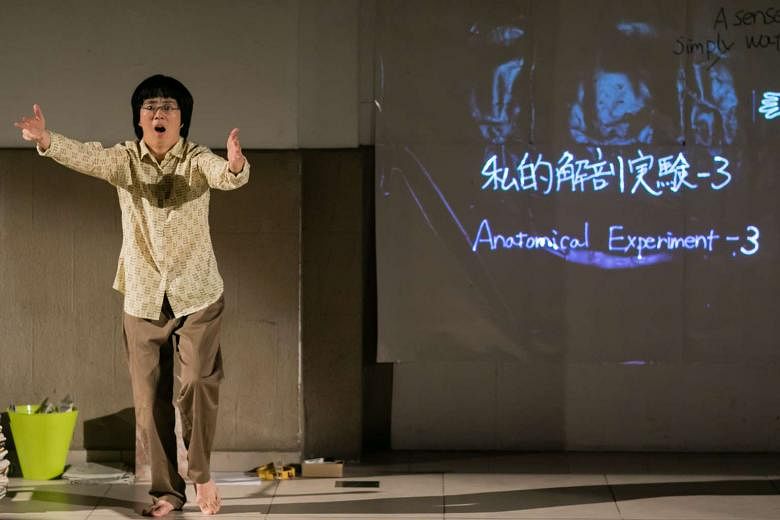Last Friday, two Japanese dance artists reminded us that in the end, even as performance is crafted through set choreographic structures, the end goal is always about triggering boundless wonder and imagination.
Against the abandoned tracks along the station's platform, a skeletal wooden framework of a destroyed shack standing among a pile of rubble greeted the audience.
Amid this scene of disaster, a quirky Zan Yamashita spoke to the audience warmly, addressing us more as a person than a performer.
He conjured images that were superlative and fantastic - huge floods, great fires, as well as drowning fish and falling birds.
The rubble gave an indication of what had already happened. Yamashita's monologue complimented this, putting us into the situations that could have led to the destruction that lay before us.
-
REVIEW / DANCE
-
DOUBLE BILL - DAIKOUSHIN BY ZAN YAMASHITA/SOME EXPERIMENTS IN A DECADE AND A HALF BY NATSUKO TEZUKA
Tanjong Pagar Railway Station/ Last Friday
It was this triggering of imagination that made the work such a gem.
Daikoushin brought the ideas of performance and theatre-going back to their essence - an experience in which performer and audience work together to create a brief moment of wonder.
Perhaps no other image of Daikoushin displayed this idea more than when Yamashita sat among the rubble and shone a torch light onto a disco ball as Bread's famous ballad, If, serenaded all who gathered to partake in this shared moment - its famous lyrics "If a picture paints a thousand words..." echoing Yamashita's efforts to create something meaningful out of apparent meaninglessness.
Moving into the terminal building after an intermission, the evening shifted into academic territory with Natsuko Tezuka's dense work, Some Experiments In A Decade And A Half.
Performed almost as a lecture demonstration, Tezuka's body was presented plainly as the soundtrack of her detailed lecture laboriously explained the methodologies of her anatomical experiments.
When movements were demonstrated, they were an intriguing combination of spasm-like reactions caused by impulses emanating from deep within.
A series of quivers, shivers and random shakes made Tezuka look like she was constantly jolted by forces of the subconscious. However, when framed against an avalanche of plainly delivered information, my concentration was indeed tested.
To be fair, Tezuka's work was an important event for the Singapore dance scene, where so much of dance is done but not necessarily analysed or discussed.
But to receive this lecture on a Friday night proved a little heavy.
A big surprise awaited those who were patient enough to stay till the end.
In what was a rather sudden build up, her body started gaining momentum as she tried to answer questions thrown at her from a loud booming voice.
Her answers quickly degenerated into guttural moans and groans as her body started losing control.
Suddenly, the moaning took on this song-like rhythm as she walked into the cavernous space while wailing what sounded like a strange mountain tribe song. The experience was hair-raising.
I witnessed a body that had been stuffed to the brim with so much logical information that all it could do was to lose its analytical faculties and respond with a very deep, subconscious human emotion.
It left me unsettled and awe-struck all at once.

